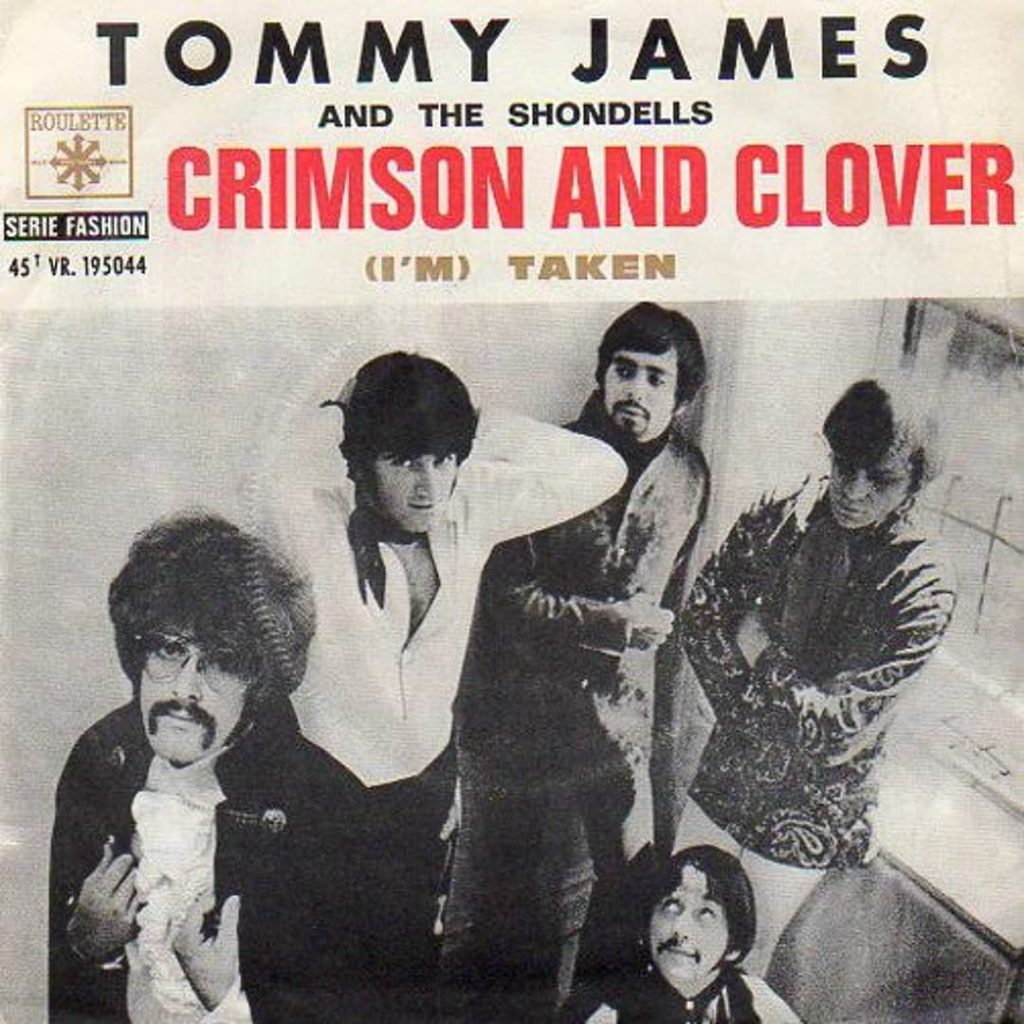
Tommy James & The Shondells – A Psychedelic Masterpiece with “Crimson and Clover”
When Tommy James & The Shondells released “Crimson and Clover” in late 1968, they delivered a track that would forever alter their career and the landscape of pop music. Moving away from their earlier bubblegum pop hits like “Mony Mony” and “I Think We’re Alone Now,” the band took a bold leap into the world of psychedelic rock. This shift not only earned them critical acclaim but also cemented their place in the pantheon of 1960s rock legends. With its dreamy sound, experimental production, and hypnotic vocals, “Crimson and Clover” reached No. 1 on the Billboard Hot 100 in early 1969, marking a significant departure for the band both musically and stylistically.
From the first notes of the song, it’s clear that “Crimson and Clover” is something different. The opening guitar riff, coupled with a delicate tremolo effect, sets a tranquil, almost ethereal mood. As soon as Tommy James’ soft vocals begin, singing the now-famous words, “Ah, now I don’t hardly know her, but I think I could love her,” you’re immediately drawn into a world of swirling colors and emotions. The song captures a sense of mystery and longing, perfectly encapsulating the spirit of the late 1960s, when music was evolving in step with the counterculture movement.
One of the defining features of “Crimson and Clover” is its unique production. Tommy James, who co-wrote the song with drummer Peter Lucia, was heavily involved in the recording process, experimenting with new sounds and techniques that gave the song its signature vibe. The track features heavy use of tremolo, a shimmering guitar effect that creates the undulating waves of sound that make “Crimson and Clover” feel almost like a daydream. The layered vocals and reverb add to this hazy, psychedelic atmosphere, making the song an immersive listening experience.
Lyrically, “Crimson and Clover” is relatively sparse, but its simplicity is part of its charm. The lyrics are more suggestive than explicit, leaving much to the listener’s imagination. The phrases “Crimson and clover, over and over” are repeated throughout the song, acting as a sort of mantra that’s open to interpretation. Some listeners see it as a meditation on love and passion, with “crimson” symbolizing the intensity of emotion and “clover” representing luck or purity. Others view it as a psychedelic exploration, with the colors and imagery conjuring a surreal, dreamlike world. Either way, the lyrics serve more as an emotional backdrop than a narrative, allowing the music and mood to take center stage.
The song’s structure also sets it apart from the typical pop song of the time. Clocking in at over five minutes, “Crimson and Clover” has an extended instrumental section that features a heavily distorted guitar solo, something relatively unheard of in mainstream pop music at the time. This solo, along with the song’s trippy vocal effects, helped define the song as a true psychedelic rock piece. The song’s extended outro, with its slow fade and repeating lyrics, leaves the listener in a state of calm reflection, almost as if they’ve been on a journey through sound.
Another key aspect of the song’s success was its ability to transcend genres. While rooted in the psychedelic rock movement, “Crimson and Clover” also appealed to fans of pop and even R&B. The song’s dreamy, melodic sound, combined with its emotional depth, gave it broad appeal. It was a significant departure from the fast-paced, upbeat hits that had previously defined Tommy James & The Shondells, but it proved that the band was capable of evolving and exploring new musical territory.
The song also had a lasting influence on other artists. In 1982, Joan Jett & The Blackhearts covered “Crimson and Clover,” bringing it to a new generation of listeners and once again making it a hit. Jett’s version retained much of the original’s charm, while adding a harder, rock edge that suited her style. The fact that “Crimson and Clover” was successfully covered more than a decade after its initial release speaks to its timeless appeal and its place in the canon of rock classics.
For Tommy James, “Crimson and Clover” represented a turning point in his career. The success of the song allowed him more creative control, and it became a blueprint for the band’s subsequent hits, including “Crystal Blue Persuasion.” It also solidified the band’s reputation as more than just a bubblegum pop group, showcasing their ability to experiment with new sounds and push the boundaries of what was expected in popular music.
As the 1960s came to a close, “Crimson and Clover” was the perfect song for the moment. It captured the sense of wonder, experimentation, and possibility that defined the era, while also tapping into universal emotions of love, desire, and longing. The song’s unique blend of rock, pop, and psychedelia made it a standout track in a decade full of musical innovation, and its lasting influence can still be heard in music today.
In conclusion, Tommy James & The Shondells’ “Crimson and Clover” is more than just a hit song—it’s a masterpiece of 1960s psychedelic rock, a timeless exploration of sound and emotion. From its hypnotic tremolo effects to its poetic lyrics, the song remains a captivating listen, even more than 50 years after its release. Whether you’re drawn in by the shimmering guitar, the dreamy vocals, or the sense of freedom and possibility that permeates the track, “Crimson and Clover” continues to resonate with listeners, proving that some songs truly are timeless.